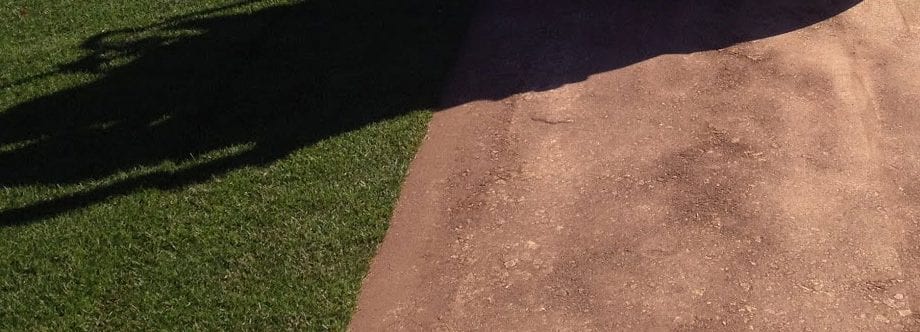Rolling Infields To Improve Playability

The most important responsibility of an athletic field manager is to provide the safest and most playable field possible. One of the tools to help achieve this goal is mechanical rolling. This can be done on both the infield and outfield areas of the field. The question many ask is, why? With respect to turf areas of the field, it is a common misconception that rolling promotes compaction, which is something we clearly want to avoid. While rolling certainly doesn’t help compaction, it is a necessary practice and any minimal added compaction should be offset by regular aerification. Soils that are wet are more prone to compaction from rolling, while areas that have 100% turf cover and a good mat layer are seldom compacted by moderate rolling.
Rolling helps provide a smooth, less bumpy playing surface. Bumpy, uneven surfaces can be caused by temperature variations such as winter heaving and traffic from both players and maintenance equipment. Bumpy, uneven turf is unsafe and causes unpredictable ball bounce. Using proper rolling equipment is imperative to provide the best results. A 300-1000 pound turf roller with rounded edges should be used. This type of roller will apply pressure to the turf similar to a heavy mower (3 – 7 pounds per square inch). Rolling is most effective when soil moisture is in the “normal” range, not too wet, or too dry. Rolling should not be done when conditions are too wet, such as when water is squirting out from under the roller. On the other hand, it should not be done when conditions are too dry because then you are only flatting out the grass and could actually damage stressed turf.
Typically, the first rolling comes at the start of the season – helping smooth fields from frost heaving and uneven spring growth from different grass species. Rolling is often used to correct minor surface irregularities and even for leveling mole tunnels. Solid rollers on mowers are another way to apply a regular light rolling, which can help provide a smoother surface. High and low areas that cause water pockets, or “bird baths,” will not be improved with rolling; grading is required for these issues. Topdressing, core aeration, and dragging can help fill these, and particularly smaller depressions, while making the field smoother. Rolling turf areas of an athletic field is just one of several important cultural practices, like core aeration, topdressing, and seeding, to supply sufficient turf cover. It should be done as often as practically allowed by labor, weather and circumstance.
Rolling the skinned areas of baseball and softball fields is an important step when amending or in new construction scenarios. A 1-3 ton twin drum roller is recommended to assure that the surface will be smooth and free from any visible dips and humps that can hinder positive surface drainage and affect playability. Rolling after installation or amendment will minimize further settling and improve the performance of the infield mix. Having proper moisture present at the time of rolling is critical to achieve optimum compaction. Unlike a turf circumstance, with skinned areas, compaction is desirable. When the desired level of compaction cannot be reached with a roller, irrigation or natural rain water will provide additional settling and increase compaction.
Rolling infield skins can help improve minor divots or chunking following heavy play. Field managers should pay particular attention to the transition areas between skinned and turf. A bad edge reduces both playability and player safety. When rolling a skinned infield, the roller should partially extend over the turf area to reduce creating a lip or hard edge, and provide a smoother transition.
Rolling your field is an important cultural practice that, when used along with other cultural and fertility practices, can help make your field look better, play better, and be more safe for the athletes that use it.
Denny Barron
Sales Manager







